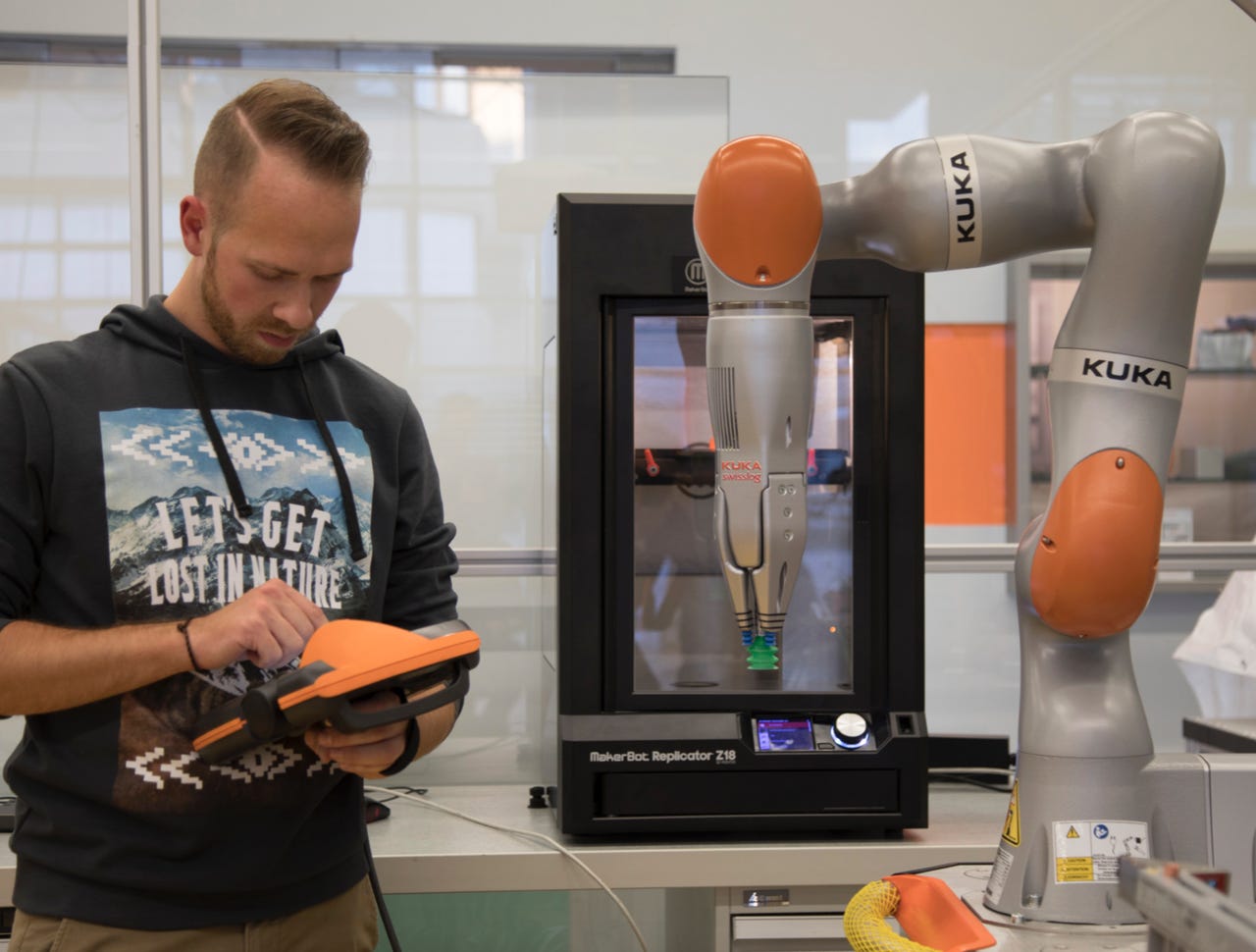Here's how 3D printing makes the robots that make everything else


To design the robots and grippers quickly, KUKA defaults to 3D printing.
There's a lot of talk about the promise 3D printing holds to transform manufacturing, but far less coverage of how the technology is actually being implemented in enterprise today.
3D printing hands on
Aside from enabling low-volume production, 3D printing is also having a huge impact on how some of the largest companies in the world do business.
I was reminded of that recently when I got a peek at how one of the leading manufacturers of industrial automation solutions uses 3D printing extensively to create its robots and end effectors, the part of a robot that grips, grabs, welds, or wields.
KUKA Robotics, a German manufacturer of industrial robots, is a leading supplier of automation to the automotive industry, aerospace, and general manufacturing.
Working across industries has enabled KUKA to expand rapidly, but it's also come with challenges. Robots that work for one industry may not work for another, which has forced KUKA to maintain an extensive catalog of products, each with its own broad range of custom tool options.
Read also: 3D Systems wants dentists to 3D-print your dentures with NextDent 5100
To design the robots and grippers quickly, KUKA defaults to 3D printing.
In Germany, two product teams work on new robots. One is a prototyping team that develops the base units. and the other is an applications engineering team that develops new end effectors and figures out ways for customers to use the robots.
Both teams use 3D printers like the MakerBot Z18, a high-capacity industrial 3D printer.
The head of the prototyping team at KUKA is Soeren Papsdorf. Using in-house printers, Papsdorf and his team begin planning and testing a large range of precision parts.
As a robot takes shape, the team creates testable scale prototypes to begin figuring out how troublesome features like cable routing will function in the real world.
Instead of ordering a new batch of parts from a supplier each time a poorly routed cable frays, Papsdorf's team can give the information to a designer, who quickly tweaks the schematics and prints new parts.
But prototyping is just one way the company uses 3D printing. As Papsdorf explains, you can't just go out and buy a pre-made manufacturing line to produce complex robots. KUKA 3D prints all its manufacturing jigs and fixtures in-house.
That has the benefit of bringing production online faster, and it also means KUKA can quickly tweak and optimize production processes without long down times.
After a base model robot is designed and tested, the applications engineering team steps in to figure out how customers can best use the machine.
Read also: 3D printing hands-on: Modding the Ultimaker 3 with 3D printed accessories
If a customer needs a robot for a specific task, such as picking up something delicate, the team creates end effectors to give the robot that functionality.
Responding to a recent customer request, Honsberg and his team designed and built a gripper out of 3D printed parts that, when paired with a camera and software, can identify specific objects from various containers and pick them up.
That level of customization would be impossible if not for KUKA's in-house ability to iterate end effectors.
KUKA is just one company, but it provides a telling look at how large manufacturers are turning to 3D printing at various stages of the design and production process.
Previous and related coverage
Modding the Ultimaker 3 with 3D printed accessories
The Ultimaker 3 is a fine printer, but there are still some tweaks you might want to make. In this edition of the 3D Printing Discovery Series, we showcase two great (and necessary) mods for the Ultimaker 3.
3D Systems CEO Joshi on additive manufacturing, materials innovation and the state of 3D printing
In a wide-ranging interview with ZDNet, Joshi talks about the impact of additive manufacturing, 3D Systems approach and how more materials innovation is needed to scale customization.